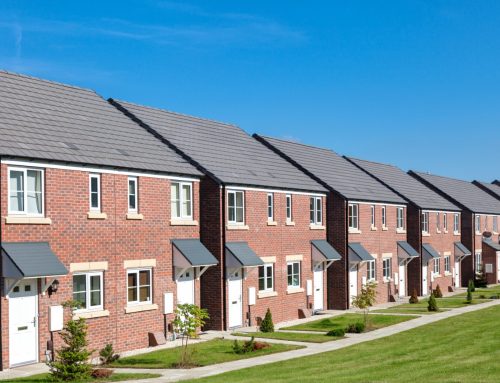Stamp Duty Reform 2016 Budget What changes for property investors?
Stamp Duty Reform 2016 Budget what changes for property investors? Now the chancellor George Osborne has delivered the budget for 2016. Labelling “Financial markets” as “turbulent” and insisting “Britain will be stronger safer and better off inside a reformed EU”. Osborne discussed a range of measures, a new “sugar tax” on soft drinks was confirmed. Here we will focus on the areas which will most affect the property market, buy to let investors, buyers and sellers.
Stamp Duty Reform 2016 Budget what changes for property investors?
The Stamp Duty Reform in the 2016 Budget was eagerly anticipated since the Autumn Statement. Now Osborne has delivered the budget, in a speech lasting over an hour and has now Clarified the 3% additional stamp duty. The position was not diluted. The new surcharge will apply to second and additional properties bought, this will apply for both individuals and companies. However, given the past performance of buy to let and the positive growth forecasts for the house prices, the additional 3% is unlikely to deter the majority of property investors and buy to let landlords who understand the value and benefits of investing in UK property. The surcharge which is applicable from 1st April 2016, will also apply to larger investment of 15 properties and above. The Chancellor stated “We’re going to use receipts to support community housing trusts, including £20 million to help young families onto the housing ladder in the South West of England.” The additional revenue will fund affordable housing, in turn, will serve to bridge the shortfall in available housing stock and therefore help first time buyers get a foot onto the ‘property ladder’. Osbourne forecasts this move will raise £1 billion by 2021, this will be used to help fund the housing budget to £2 billion which will be doubled from £1 billion. This is seen by many, as vastly insufficient for Britain to build the number of new homes required. The budget now clears the uncertainty surrounding stamp duty since the autumn statement. Now clarity has arrived it is time to back to business as usual within the buy to let market.
Stamp Duty Reform 2016 Budget What changes for property investors?
Infrastructure Development HS3 & Crossrail 2
Chancellor George Osborne has announced funding of £60 million for HS3. This will will further boost the growth in the northern cities. ‘The northern powerhouse’ economies continue to grow and the high speed 3 rail link between Leeds and Manchester to cut journey times between the two cities. This is expected to create further investor demand for properties. It was also announced £75million for options for the Trans-Pennine road tunnel to link Sheffield and Manchester. This would span 18 miles and would become the longest road tunnel in Europe. Although these projects are in the early phase of development, further investment into the billions could follow in forthcoming years. HS3 will boost activity in the Regional Cities which are benefiting from the plans for improving infrastructure. HS3 will cut journey times making many regions more accessible. Multiple areas are seeing prices rise, regional economies, employment figures building activity.t The improved road and transport links in the region will draw business interest to the area. Therefore benefiting the regional economy by creating employment. Therefore the property market will see increased rental and end user demand for property. Consequently, this means stable growth and rental income for buy to let investors. The £60 million to develop plans for HS3 which will reduce travel times close to 30 minutes between Leeds and Manchester. Will further boost the regions suitability for investment. Osbourne also earmarked an £80 million fund, to continue planning for Crossrail 2. The proposed line will connect South-West and North-East London, increasing Tube capacity which will reduce the dependency on Victoria and Waterloo stations.
Stamp Duty Reform 2016 Budget What changes for property investors?
Buy to let property investment has outperformed all major mainstream asset classes in recent years. The lack of house building which is partly due to the planning system and land competition create obstacles for development. The knock on effect of this is the current supply/demand imbalance we are seeing today. This is affecting the first time buyers being able to get on the ladder, and leading to buy to let investors benefiting from the market conditions. The new measures are an attempt to stem the flow of property investors and deter buy to let. However, the new stamp duty hike will not stop the UK property market’s appeal as a lucrative, low risk investment. In the back drop of global conditions, such as stock market volatility, currency fluctuations and falling oil prices. Regarded as a safe haven investment, UK property, despite the stamp duty increase, will still attract inflows of capital from middle eastern and Asian investors. Although investors building buy to let portfolios will have to pay an additional 3% stamp duty on every tax band; the new tax surcharges are likely to be factored in and accepted as the market rate to buy into the UK’s most successful asset class. The expectation will be that property investors could pass the surcharge onto renters through increased rents. Currently, 5-8% Growth per year are expected, Investors can recoup the additional outlay within just a few months.
Market Conditions
The conditions will still remain largely unchanged. The shortage of available homes, caused by a lack of house building is driving house prices up. This coupled population growth is increasing competition for property. This compounded with the shortage of mortgage lending and accessibility for the required deposits for end user buyers will provide a stable platform for buy to let investors and the new infrastructure development will see new growth areas for investment and more investment finding its way to the Northern cities Manchester Liverpool and Leeds.








